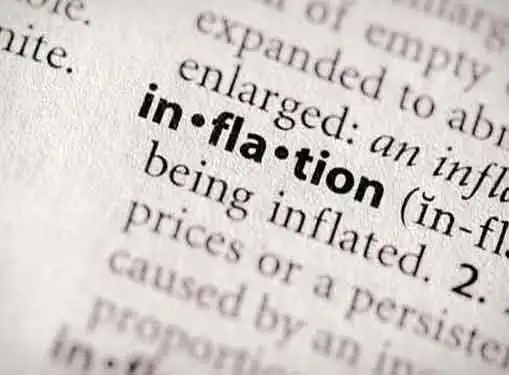Business Finance
Inflation Derivatives
Written by Bennet Grill for Gaebler Ventures
Should your business be purchasing inflation derivatives? In this article, we explain what inflation derivatives are and why buying inflation derivatives might be a smart move.
Inflation derivatives have been traded for a little over ten years and are a relatively new financial instrument.

Like other derivatives, inflation derivatives allow investors to mitigate the risk of inflation-- a risk essentially all investors are exposed to. An essential concept to understand when studying inflation derivatives is the difference between nominal and real return.
If an investor places $10,000 into a money market account and it returns 5% in one year, he has a nominal return of 5% and profits $500 for a total of $10,500. However, if in that same period of time, inflation in the country the investor lives in is 5%, the investor has a real return of 0%.
This is due to the fact that between the time of the initial investment and the year later the purchasing power of the investor has not changed.
Because inflation was five percent, the $10,500 the investor has at the end of the year is able to purchase the same amount of goods and services that the $10,000 was able to purchase at the beginning of the year. While the investor ends up with a higher quantity of money, qualitatively, his level of purchasing power remains the same.
Inflation derivatives allow investors to protect or expose themselves to inflation.
Inflation is measured by a country's consumer price index (CPI), which represents the monetary cost of a bundle of goods and services. Many governments of countries around the world issue inflation-indexed bonds, which promise a rate of return above the level of inflation. In the United States, these bonds are called Treasury Inflation Protected Securities and in the United Kingdom they are UK Inflation Linked Gilts.
A common inflation derivative known as the zero coupon inflation swap allows investors to manage inflation risk without purchasing such inflation-indexed bonds (whose purchase often requires a high level of capital.) Zero coupon inflation swaps trade the a cash flow linked to inflation with a cash flow linked to a fixed or floating rate--often times a rated based on the London Interbank Offered Rate (LIBOR.) The cash flows are based on a notional cash value.
Here's a simple example of a zero coupon inflation swap between two counterparties with a notional value of $100,000 and a term of 3 months. Counterparty A agrees to pay Counterparty B the cash flows resulting from a fixed rate % return on $1000 over a one year period in exchange for the cash flows of $100,000 with inflation (the change in the CPI) over the same period.
For example purposes, let's say the fixed rate is 3% and inflation is 3.1% in the same period. Counterparty A pays Counterparty B $3000 and Counterparty B pays Counterparty A $3100. Counterparty A has profited $100 in this case because it has made the bet that the inflation rate would be higher than the fixed rate agreed upon.
While the notional value of the contract is $100,000 (the principle amount required to get the same returns using inflation-indexed bonds,) neither investor was required to commit this amount of capital.
Inflation derivatives are a great tool for those needing to hedge their exposure to inflation in investments.
Bennet Grill is a writer who has a passion for business and finance. He is currently an Economics major at Duke University in North Carolina.
Share this article
Additional Resources for Entrepreneurs

Conversation Board
Questions? Comments? Suggestions? Share your thoughts on inflation derivatives.